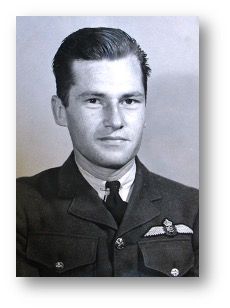
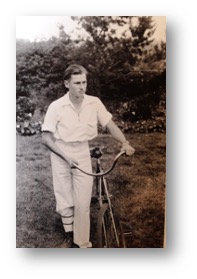
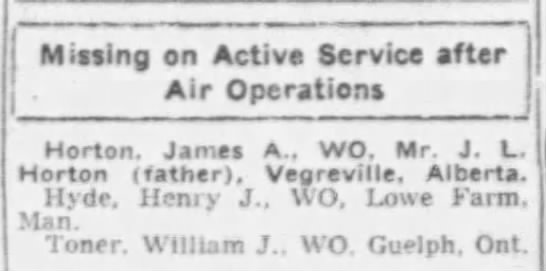
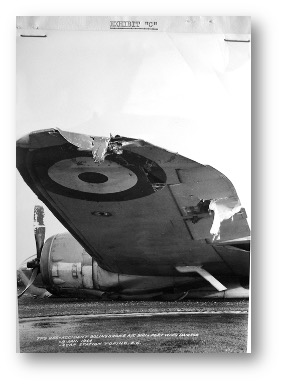
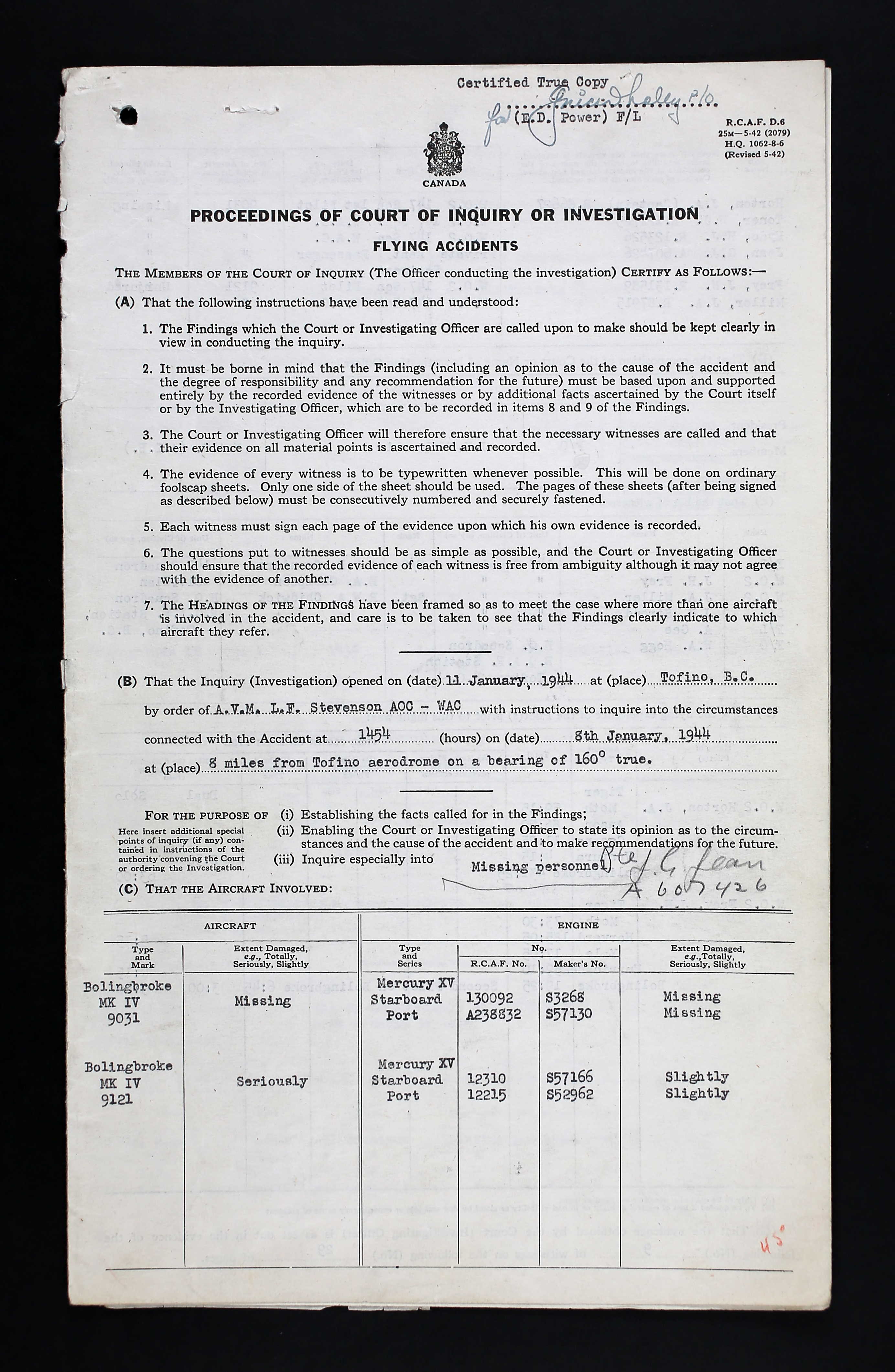

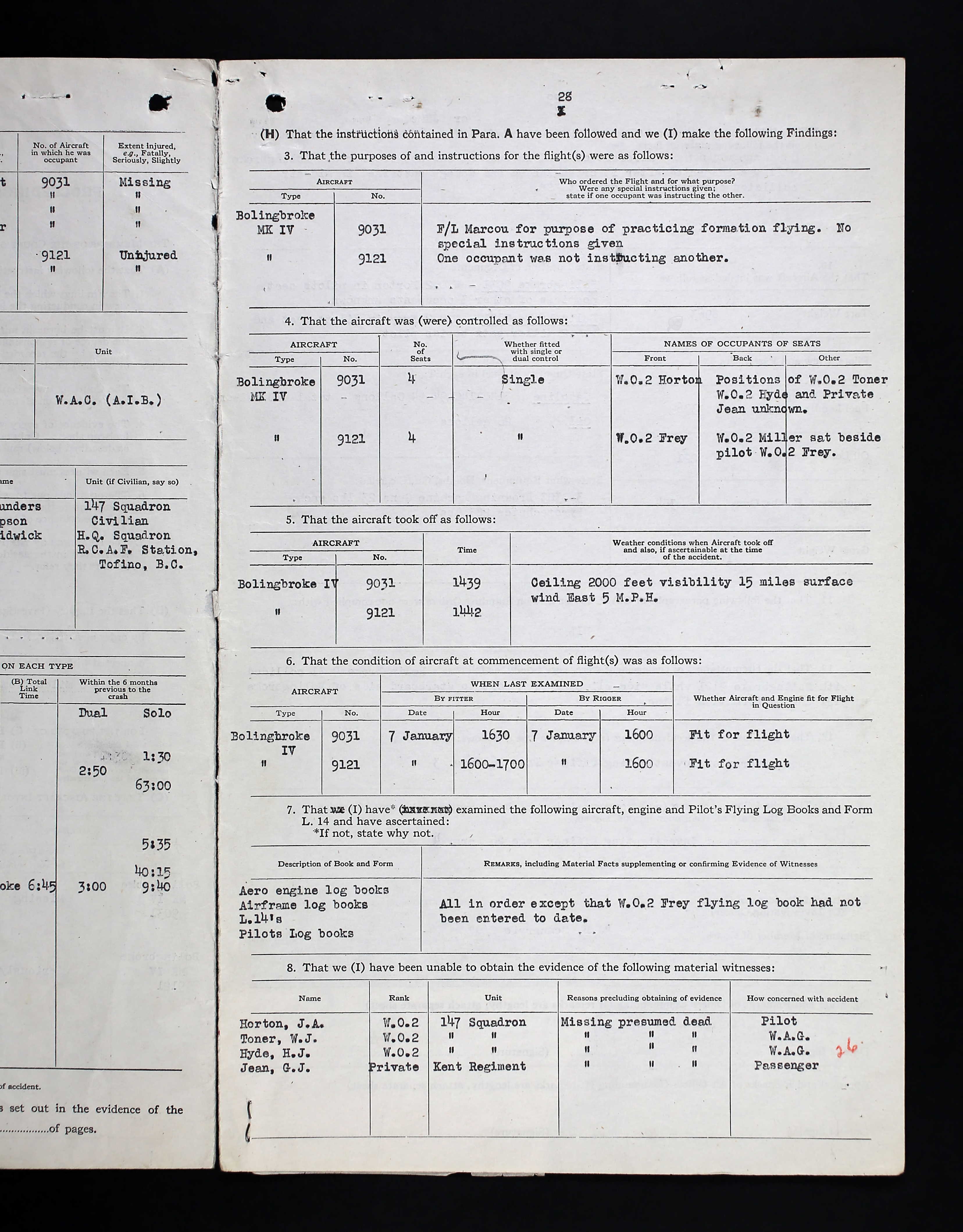
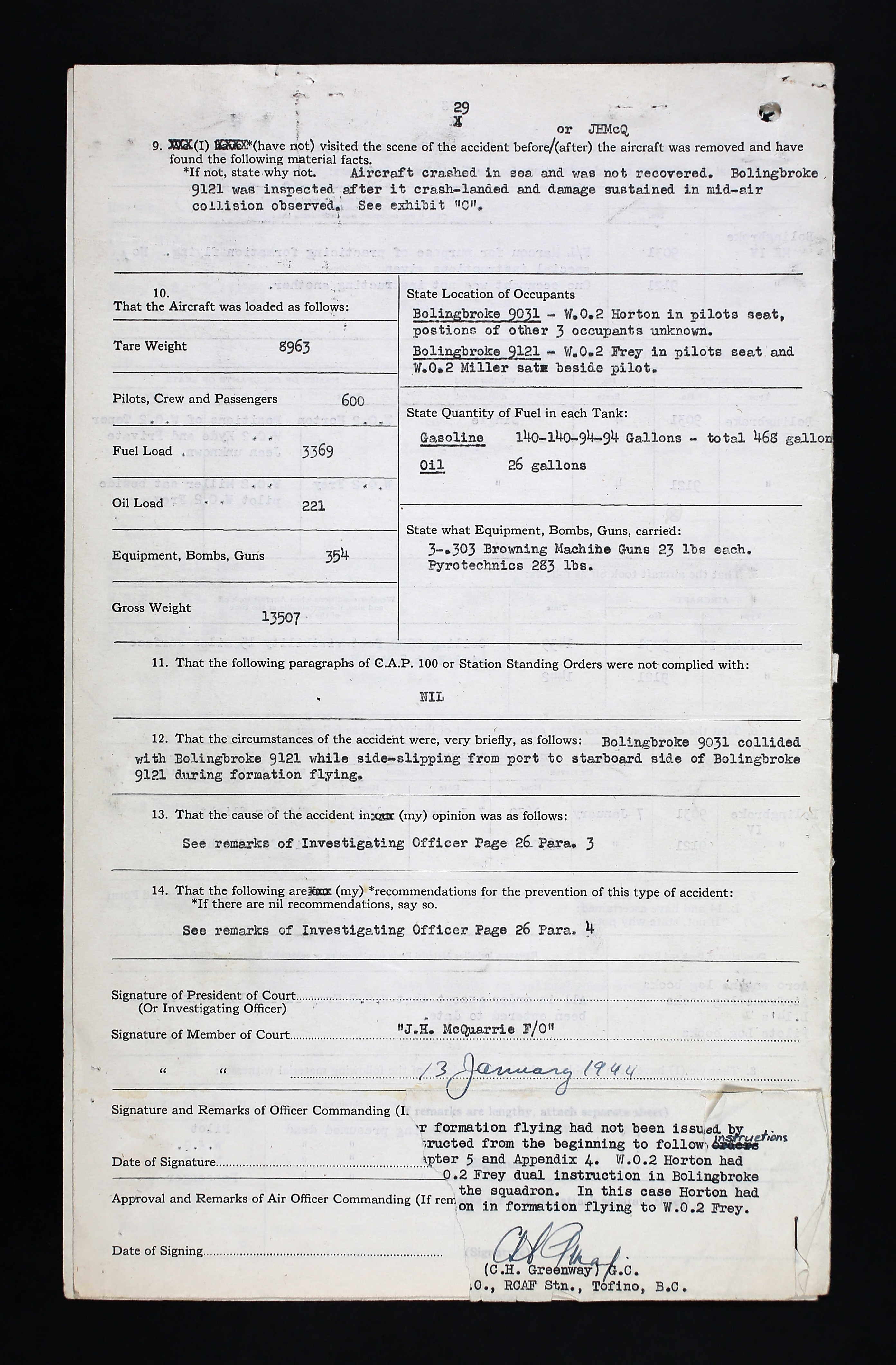
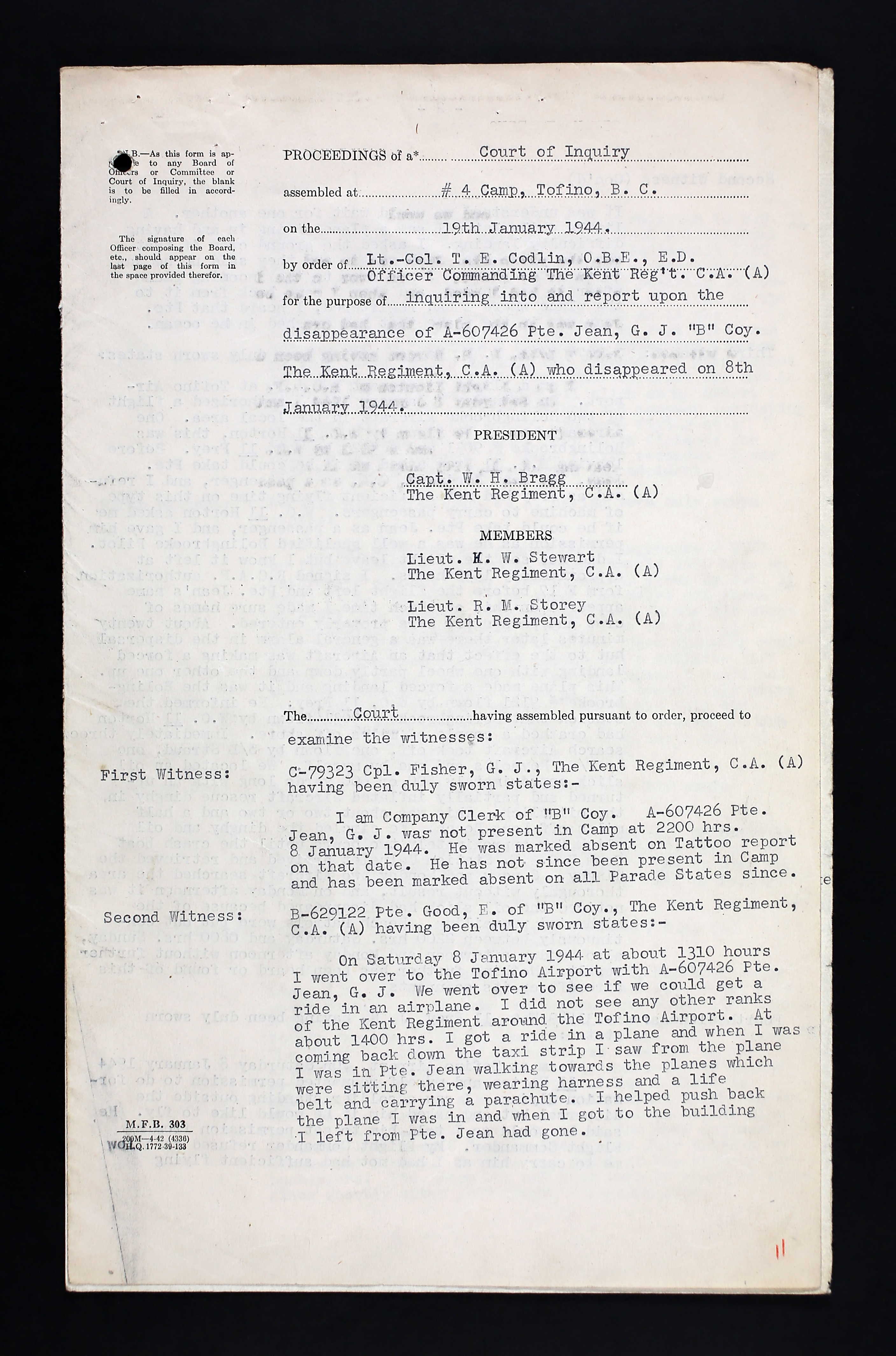
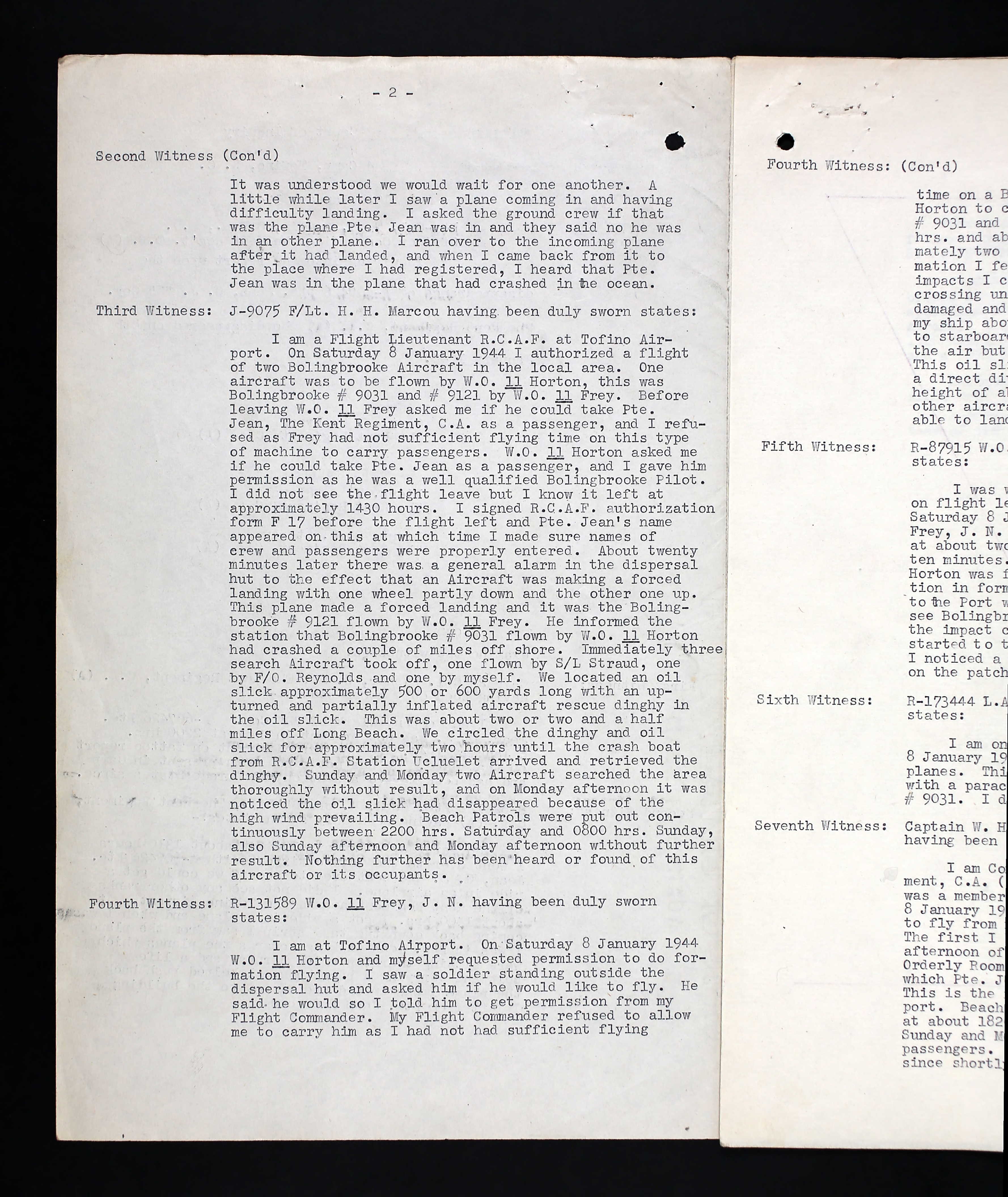

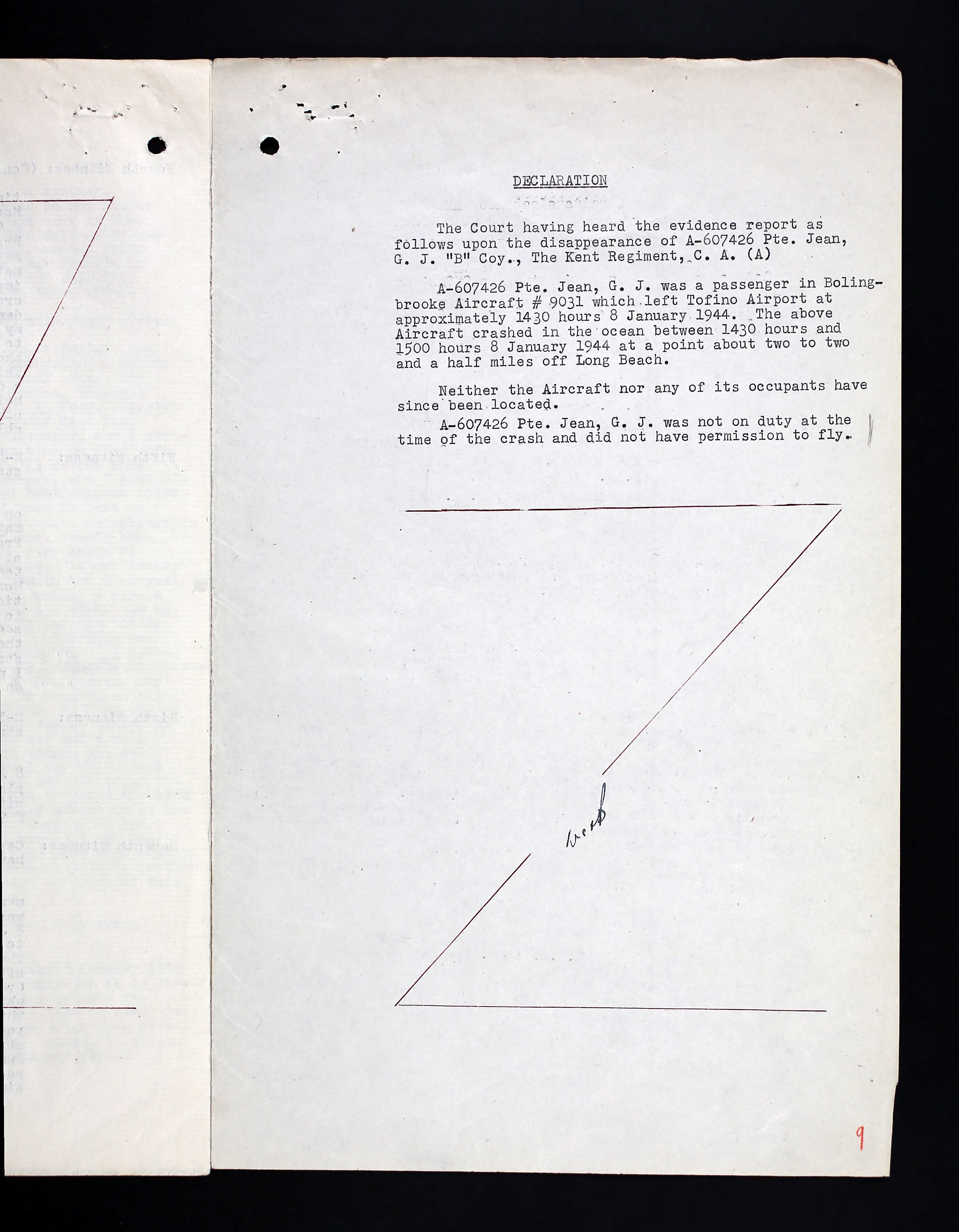
May 9, 1921 - January 8, 1944












Jim Horton's story and the Court of Inquiry can be found in the book Quietus: Last Flight by Anne Gafiuk available through the Bomber Command Museum of Canada and through the author: anne@whatsinastory.ca. Anne thanks the Horton family for their contributions. The following is an excerpt from the book.
James “Jim” Andrew Horton was born in Vegreville, Alberta on May 9th. His attestation papers state 1920, but his youngest sister, Charlotte said, “No, he was born in 1921.”
Jim had three brothers serving in the Canadian Armed Forces: Allison “Al”, Edward “Ted”, and Clarence. Their youngest brother, Wilfrid, was still at home. They had three sisters: Kathleen and Mabel were married; Charlotte was also at home with their parents, Andrew Leslie and Catherine Elizabeth (nee Gould) Horton. Mr. Horton was the owner and editor of the Vegreville Observer.
On his attestation papers, Jim indicated he was a student, but also a photographer. “Prints with father’s publishing firm.”
Jim stood 5’ 7 ½” tall and weighed about 145 pounds. He had brown hair and brown eyes. He liked to skate, cycle and swim. He said he smoked five cigarettes a day, but did not drink alcohol. The Mayor of Vegreville was one of his references, as was F/O C.D. Gordon, also from Vegreville.
Jim signed up in Edmonton in October 1940. Comments made on his forms included, “Good Pilot or Observer. Quick. Organized. Confident. Mature. Pleasant. References reliable. Excellent candidate for flying duties. Interested in photography and should make a fine observer. Well recommended. Above average.”
Jim was sent a letter to return in January 1941 to start his service with the Royal Canadian Air Force. In April 1941, he was assessed as a “youthful alert lad, steady and not easily influenced.” At #2 ITS in Regina, he passed with 68% and was 134 out of 161 in class. He was being considered to be a gunner.
In May 1941, he was sent to #18 EFTS at Boundary Bay, BC. He passed with 73%, but had an accident there: error in judgment resulting in a heavy landing. No one was hurt. He was then sent to #15 SFTS Claresholm and it was noted Jim’s progress was just average. “Weak type of student. Low average material.” He continued on with his training. Jim was referred to as “a dreamer” in June 1941.
“He could be cultivated, erratic and won’t settle down. Poor application to GIS; link trainer not up to standard.” In July 1941, Jim was firing a gun and the gun backfired, hitting his right eye while in Claresholm while he was on leave.
In early September, Jim’s evaluations had not improved. “Average. Slow to learn. Very nervous. Needs more self-confidence. Does not appear to be interested in his work. Not suitable for officer.”
Jim earned his Pilot’s Flying Badge on September 13, 1941.
By the spring 1942, he was at #8 BR, Anchorage, Alaska. He received this evaluation, “Has proved his capability as a captain of twin engine air craft and worthy of advancement. I am satisfied that this NCO is in all respects worthy of advancement to the next highest rank: WO2,” signed S/L Willis, Officer Commanding. “Trade Proficiency: Superior. Character Assessment: Very Good.”
On July 20, 1942, Jim was involved in an accident at Elmendorf Field, Alaska, involving Bolingbroke MIV 9001resulting in a Category B Crash. No injuries reported, but a medical assessment was done and it was discovered that Jim “would have a definite tendency to develop or manifest hyperopia,” commonly known as far-sightedness, with blurred vision and binocular dysfunction, amongst other symptoms.
In March 1943, V. E. Latimer, MD said, “A certain amount of manifest hyperopia but not in my opinion sufficient to influence his usefulness as an airman. This condition is made more apparent by the fact that he has spent the last winter in Alaska. Vision now plus 2.50 sph. 20/100 R & L.”
In July 1943, Jim was posted to Sea Island, BC. “Flying ability somewhat doubtful. Picked up some bad habits; close supervision required to correct; recommended for single engine or fighter pilot.”
From Sea Island, he was posted to Tofino, BC, on Vancouver Island, where he met his death on January 8, 1944, the Bolingbroke he was in charge of, colliding with another Bolingbroke while carrying out formation flying. An oil slick and an empty collapsed dinghy were found in the sea.
Aboard Bolingbroke 9031 W/O2 James Horton had a crew of two: Warrant Officer II William Joseph Toner, Wireless Operator, 21, and Warrant Officer Henry John Hyde, Air Gunner, 23. They took with them an unauthorized passenger: Private Gerald J. Jean, Kent Regiment, Canadian Army, 22. Pte Jean's name is on the Halifax Memorial.
In an article in the Vegreville Observer, “The dread news came just three years almost to the day, after he joined the RCAF, as he left home on January 7, 1941 for Brandon, Manitoba...like many other boys, he was especially attracted to airplanes and put his name in for the RCAF as soon as his age permitted him…All his ambitions are now ended and a promising life brought to an untimely end.”
Jim is fondly remembered by his family and is commemorated on the Ottawa Memorial.